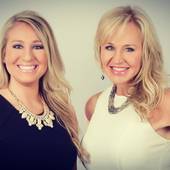01:59 PM CST on Friday, January 18, 2008
By STEVE BROWN / The Dallas Morning News
stevebrown@dallasnews.com
The mortgage market meltdown and rising foreclosure rates have widened the divide between rich and poor in the North Texas housing market.
Also OnlineMap: Dallas-Fort Worth area 2007 home sales and prices
And higher commuting costs are also coming into play.
Neighborhoods with large numbers of expensive homes and low foreclosure rates for the most part saw increases in home prices in 2007, an analysis of year-end housing data shows.
But many residential districts dominated by low- and moderate-priced housing and high foreclosures suffered price declines.
That dichotomy makes sense to housing analysts and sales agents, who have watched the market split as the availability of mortgages for first-time buyers has been sharply limited.
At the same time, more affluent buyers have taken advantage of the lull in the housing market to make purchases.
"We continue to see appreciation and strong demand, especially inside LBJ [Freeway]," said Frank Hayward with Re/Max Preston Road Realtors. "I believe this has been fueled by the dramatic increase in gasoline prices."
Mr. Hayward said that suburban low- and moderate-income neighborhoods are feeling most of the pressure.
"These homeowners, of course, have less equity to absorb price declines and strong competition, especially from the foreclosures currently on the market," he said.
Most of the neighborhoods that saw median home sales price declines in 2007 are in the southern and far eastern sections of the Dallas area.
The biggest price gains were in North Dallas, up 18 percent in 2007 from 2006, and the Park Cities, up 13 percent.
The most expensive homes - those costing $1 million and up - sold well in 2007, with a 16 percent increase areawide, according to statistics from the North Texas Real Estate Information Systems.
"Of course, where are the higher-price-range homes located? North Dallas and the Park Cities," said Barry Hoffer, a real estate agent with Ebby Halliday Realtors. "Homes in the outlying suburbs seem to be affected the most.
"The longer commute times and ongoing $3-plus gas prices are having an impact on a buyer's decision to live that far out."
Average home values in a neighborhood also play a bigger part in the number of sales. Regardless of where homes are, sales of moderate- and low-priced houses are down in Dallas-Fort Worth, statistics show.
Dallas housing analyst Ted Wilson with Residential Strategies said "the entry-level market has been the hardest hit."
"The unfortunate consequence of the fallout from the subprime debacle is that households with weak or bruised credit and those without a reasonable down payment are finding it harder to qualify for a new home loan," Mr. Wilson said.
No doubt that contributed to an overall 8 percent decline in preowned home sales in North Texas last year.
Sales dropped in all but five of the markets The Dallas Morning News tracks quarterly.
Real estate agents and housing economists are anxiously waiting to see if the traditional spring home sales market takes off.
"The early part of the 'sales season' in March and April will tell us a lot more about how 2008 is going to unwind," said Dr. James Gaines, an economist with Texas A&M University's Real Estate Center.
"We're projecting at least another 5 percent to 10 percent decline in sales volume this year from 2007 across the state," he said.
"And the trends to date suggest that the metroplex area could be one of the hardest-hit areas in terms of percentage decline."

Comments(0)